 |
 |
 |
| |
MOLECULAR AND CLINICAL EPIDEMIOLOGY OF HEPATITIS D VIRUS INFECTION IN CANADA
|
| |
| |
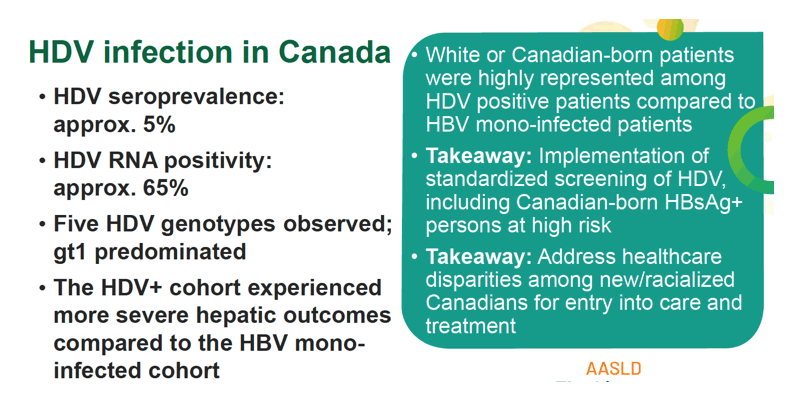
AASLD 2021 Nov 12-15
Carla Osiowy1, Ken Swidinsky1, Sarah Haylock-Jacobs2, Scott K. Fung3, David Wong3, Gerald Minuk4, Karen Doucette5, Philip Wong6, Edward Tam7, Curtis Cooper8, Alnoor Ramji9, Mang Ma5, Carmine Nudo10, Keith Tsoi11, Carla Coffin2
(1) National Microbiology Laboratory, Public Health Agency of Canada, (2) University of Calgary, (3) University of Toronto, (4) University of Manitoba, (5) University of Alberta, (6) McGill University, (7) Lair Centre, (8) University of Ottawa, (9) University of British Columbia, (10) Cité-De- La- Santé De Laval (11) McMaster University
Background: Hepatitis D virus (HDV) is estimated to infect 4.5% to 13% of chronic hepatitis B (CHB) patients globally. The prevalence of HDV infection in Canada is unknown; however, there is significant immigration to Canada from HDV endemic regions. To investigate the prevalence, genotype, demographic and clinical characteristics of HDV in Canada, (1) we conducted a retrospective analysis of HDV antibody and RNA positivity among referred specimens, and (2) a cross-sectional subset study of 136 HDV seropositive patients compared with 5,132 HBV mono-infected patients in the Canadian HBV Network.
program abstract
Methods: Specimens collected between 2012 and 2019 testing positive for anti-HDV IgG at a national reference laboratory were tested for HDV RNA. RNA positive specimens were sequenced and phylogenetic analysis performed. Consenting patients enrolled in the Canadian HBV Network were >18 years of age and HBsAg positive. Clinical data collected included risk factors, demographics, other comorbidities, treatment for HBV and/or HDV, fibrosis assessment and hepatic complications.
Results: 7,080 unique, referred patients were tested for anti-HDV IgG. HDV seropositivity was detected in 338 (4.8%, 95% CI 4.3-5.3), with 219 also RNA positive, indicating an active infection rate of 64.8% (95% CI 59.6-69.7). Five HDV genotypes were observed (Figure). Of the 136 HDV seropositive enrolled patients, 71% were RNA positive. Viremic infection was significantly associated with cirrhosis, elevated ALT and AST and FIB-4 >2. A significant association between HDV IgG and/or RNA positivity (p<0.001) and Canadian-born persons or reported behavioural risk factors, such as injection drug use, was observed compared to HBV mono-infected patients. White and Black/ African/ Caribbean patients were significantly represented in the HDV cohort, while Asian patients were more likely to be HBV mono-infected (p<0.001). Treatment experience involving interferon or certain nucleos(t)ide analogues was significantly more likely within the HDV cohort, with Canadian-born patients (p=0.037) or those reporting high-risk factors (p=0.020) having treatment experience compared to patients born in an HBV endemic country (p=0.439). Cirrhosis and complications of end-stage liver disease (i.e., variceal bleeding, hepatic encephalopathy and HCC) and liver transplantation were significantly more frequent in the HDV cohort compared to HBV mono-infected patients (p<0.001).
Conclusion: Nearly 5% of the Canadian HBV referral population is HDV seropositive. HDV infection is highly associated with risk behaviours and both domestic and foreign-born CHB patients. As HDV was significantly associated with progressive liver disease, it is essential that increased screening and surveillance of HDV infection in Canada is implemented to ensure appropriate management.
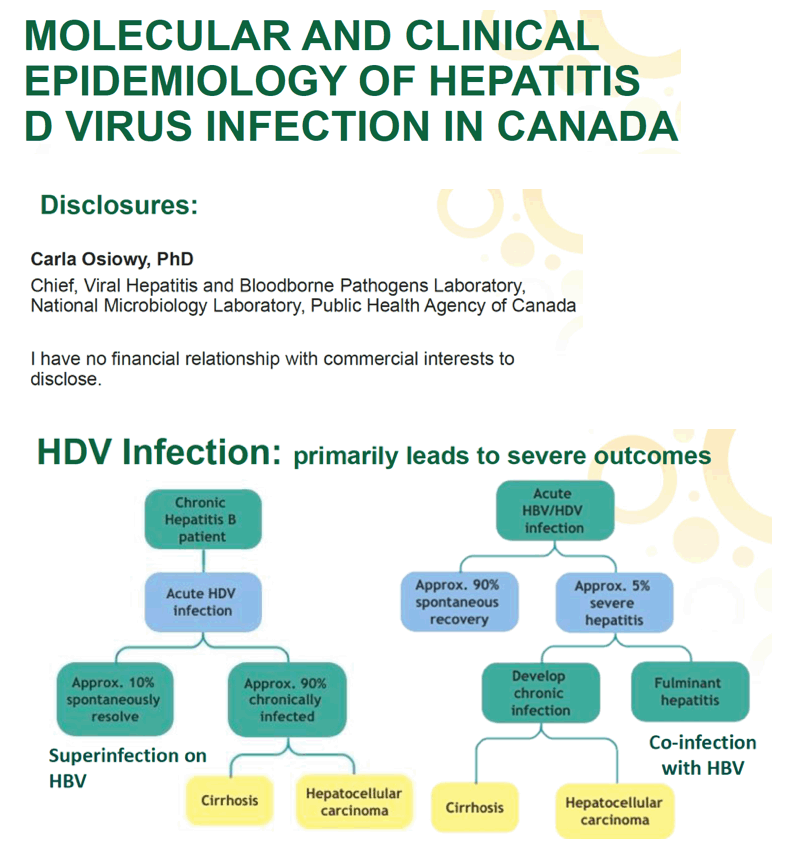
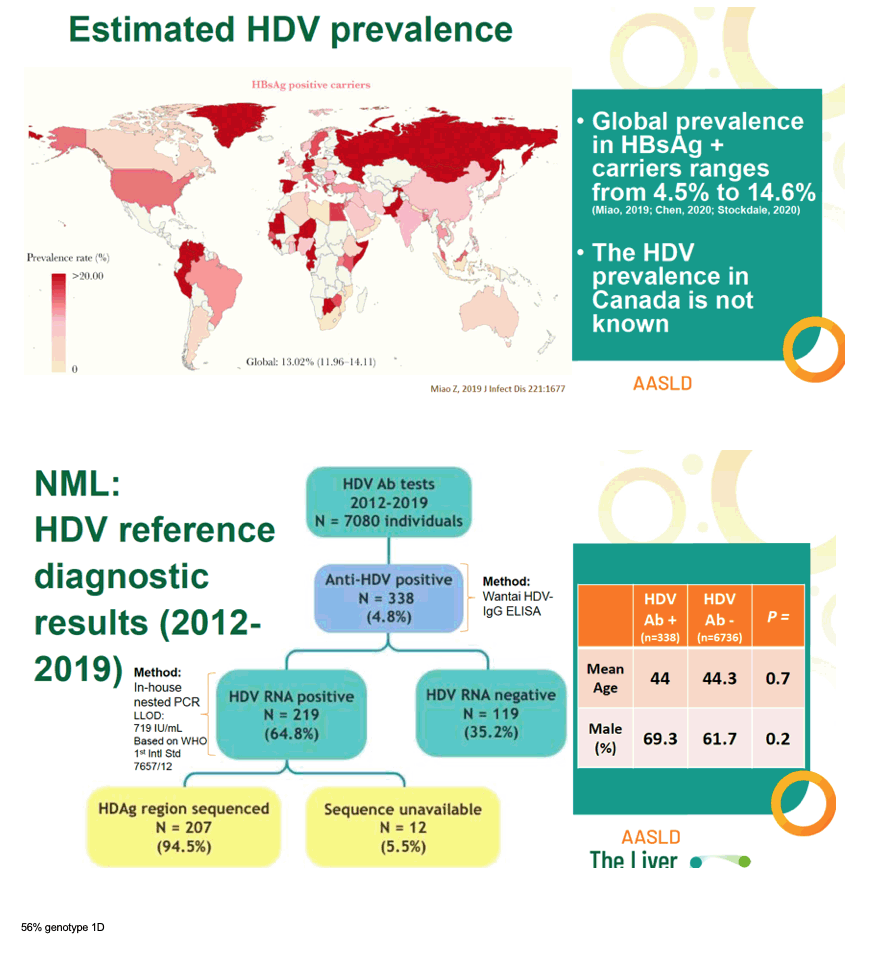
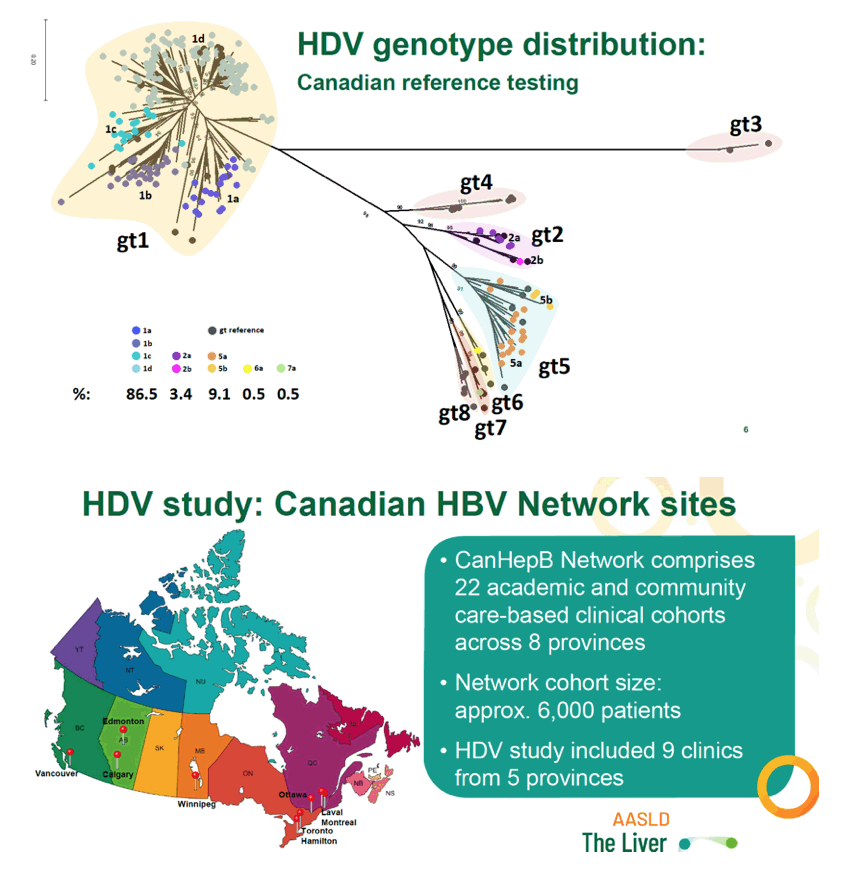
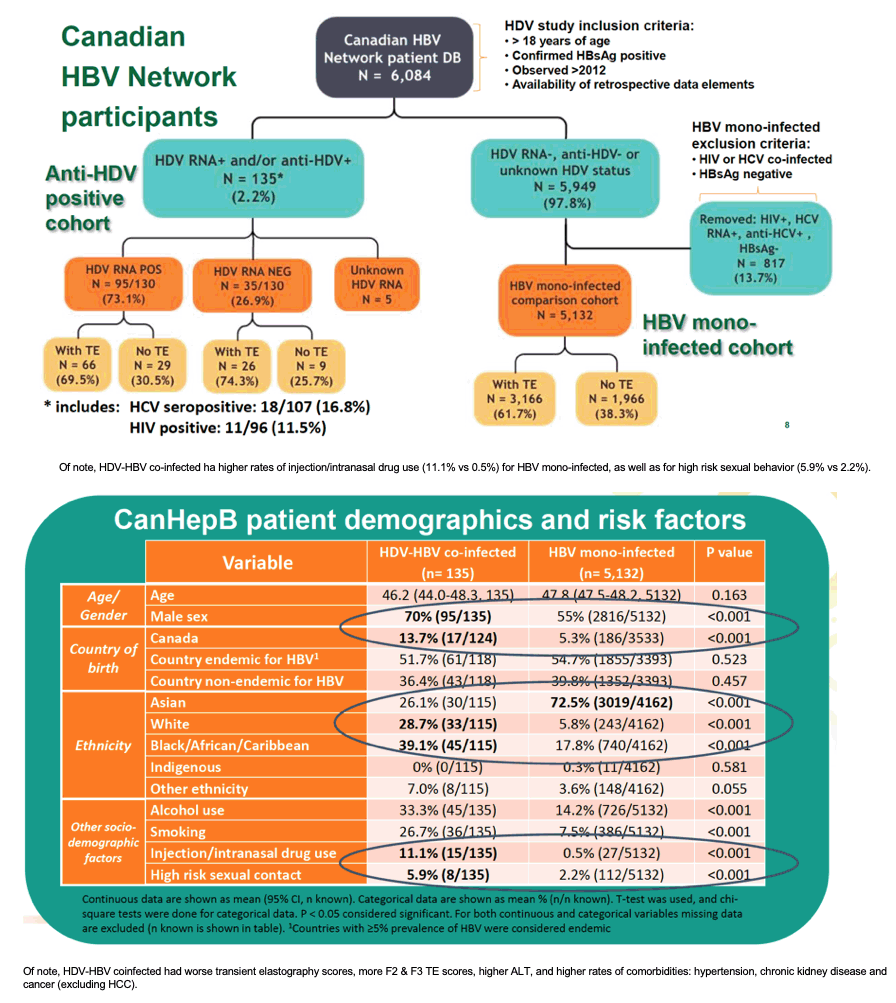
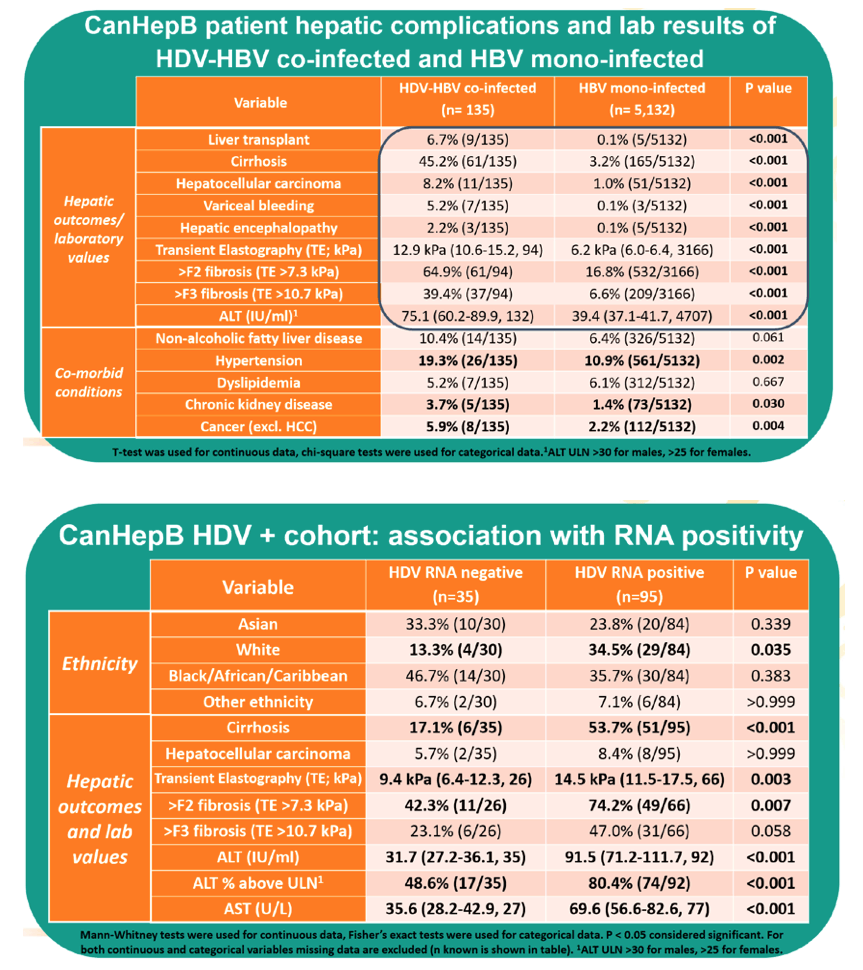
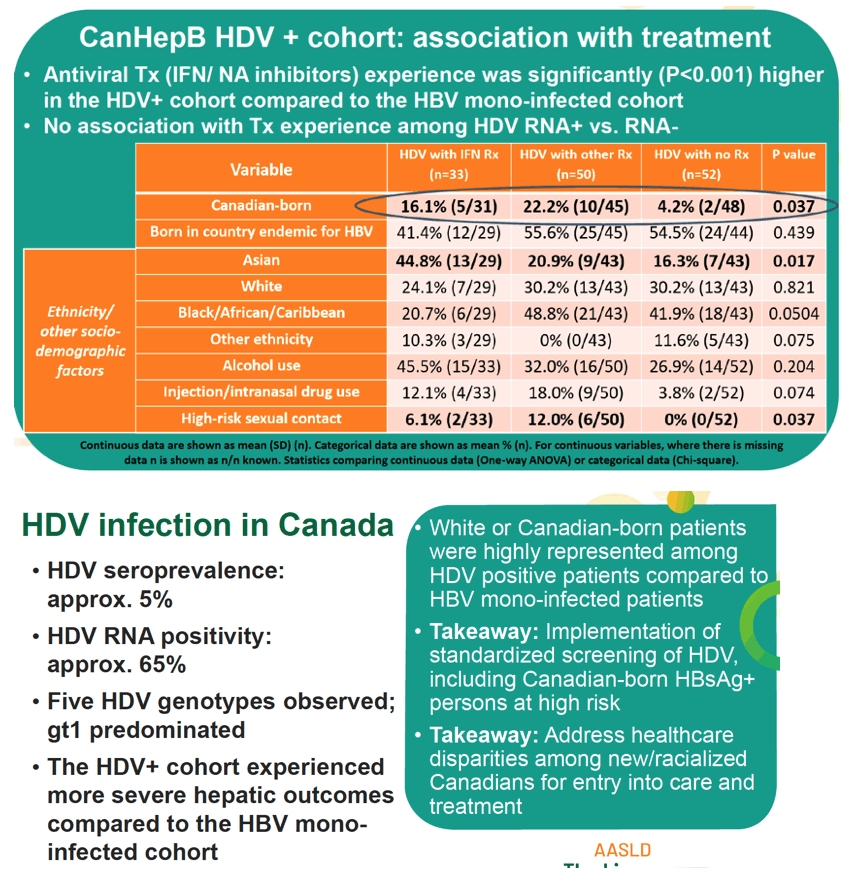

|
| |
|
 |
 |
|
|